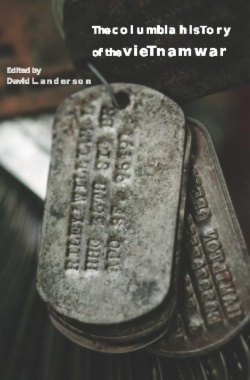Rooted in recent scholarship, The Columbia History of the Vietnam War offers profound new perspectives on the political, historical, military, and social issues that defined the war and its effect on the United States and Vietnam. Laying the chronological and critical foundations for the volume, David L. Anderson opens with an essay on the Vietnam War's major moments and enduring relevance. Mark Philip Bradley follows with a reexamination of Vietnamese revolutionary nationalism and the Vietminh-led war against French colonialism. Richard H. Immerman revisits Eisenhower's and Kennedy's efforts at nation building in South Vietnam, and Gary R. Hess reviews America's military commitment under Kennedy and Johnson. Lloyd C. Gardner investigates the motivations behind Johnson's escalation of force, and Robert J. McMahon focuses on the pivotal period before and after the Tet Offensive. Jeffrey P. Kimball then makes sense of Nixon's paradoxical decision to end U.S. intervention while pursuing a destructive air war.
John Prados and Eric Bergerud devote essays to America's military strategy, while Helen E. Anderson and Robert K. Brigham explore the war's impact on Vietnamese women and urban culture. Melvin Small recounts the domestic tensions created by America's involvement in Vietnam, and Kenton Clymer traces the spread of the war to Laos and Cambodia. Concluding essays by Robert D. Schulzinger and George C. Herring account for the legacy of the war within Vietnamese and American contexts and diagnose the symptoms of the "Vietnam syndrome" evident in later debates about U.S. foreign policy. America's experience in Vietnam continues to figure prominently in discussions about strategy and defense, not to mention within discourse on the identity of the United States as a nation. Anderson's expert collection is therefore essential to understanding America's entanglement in the Vietnam War and the conflict's influence on the nation's future interests abroad.
- Contents
- Preface
- Abbreviations
- Introduction: The Vietnam War and Its Enduring Historical Relevance
- Part I: Chronological Perspectives
- 1. Setting the Stage: Vietnamese Revolutionary Nationalism and the First Vietnam War
- 2. “Dealing with a Government of Madmen”: Eisenhower, Kennedy, and Ngo Dinh Diem
- 3. South Vietnam Under Siege, 1961–1965: Kennedy, Johnson, and the Question of Escalation or Disengagement
- 4. Lyndon Johnson and the Bombing of Vietnam: Politics and Military Choices
- 5. Turning Point: The Vietnam War’s Pivotal Year, November 1967–November 1968
- 6. Richard M. Nixon and the Vietnam War: The Paradox of Disengagemen twith Escalation
- Part II: Topical Perspectives
- 7. American Strategy in the Vietnam War
- 8. The Village War in Vietnam, 1965–1973
- 9. Fighting for Family: Vietnamese Women and the American War
- 10. Vietnamese Society at War
- 11. “Hey, Hey, LBJ!": American Domestic Politics andthe Vietnam War
- 12. Cambodia and Laos in the Vietnam War
- Part III: Postwar Perspectives
- 13. The Legacy of the Vietnam War
- 14. The Vietnam Syndrome
- Contributors
- Index

